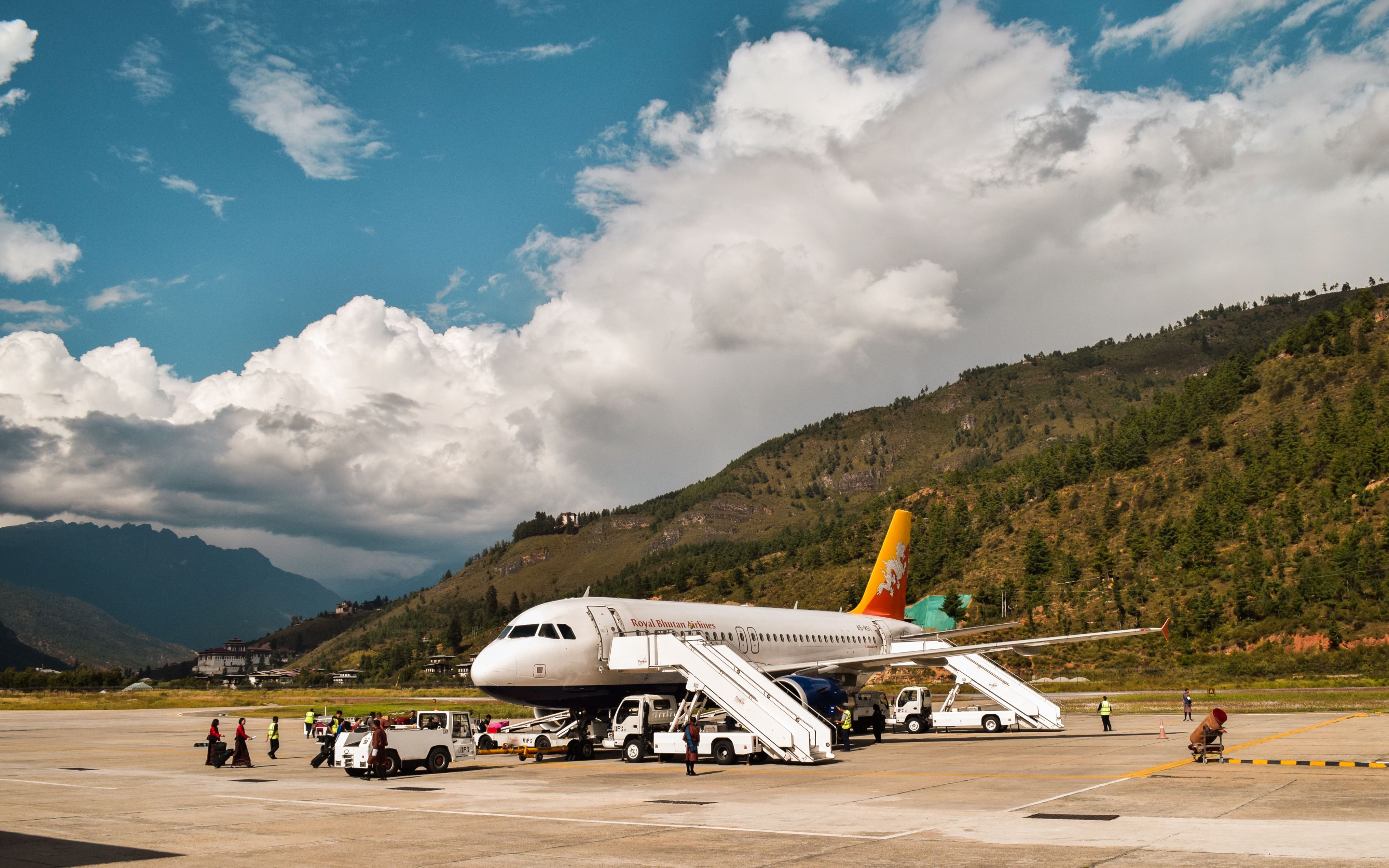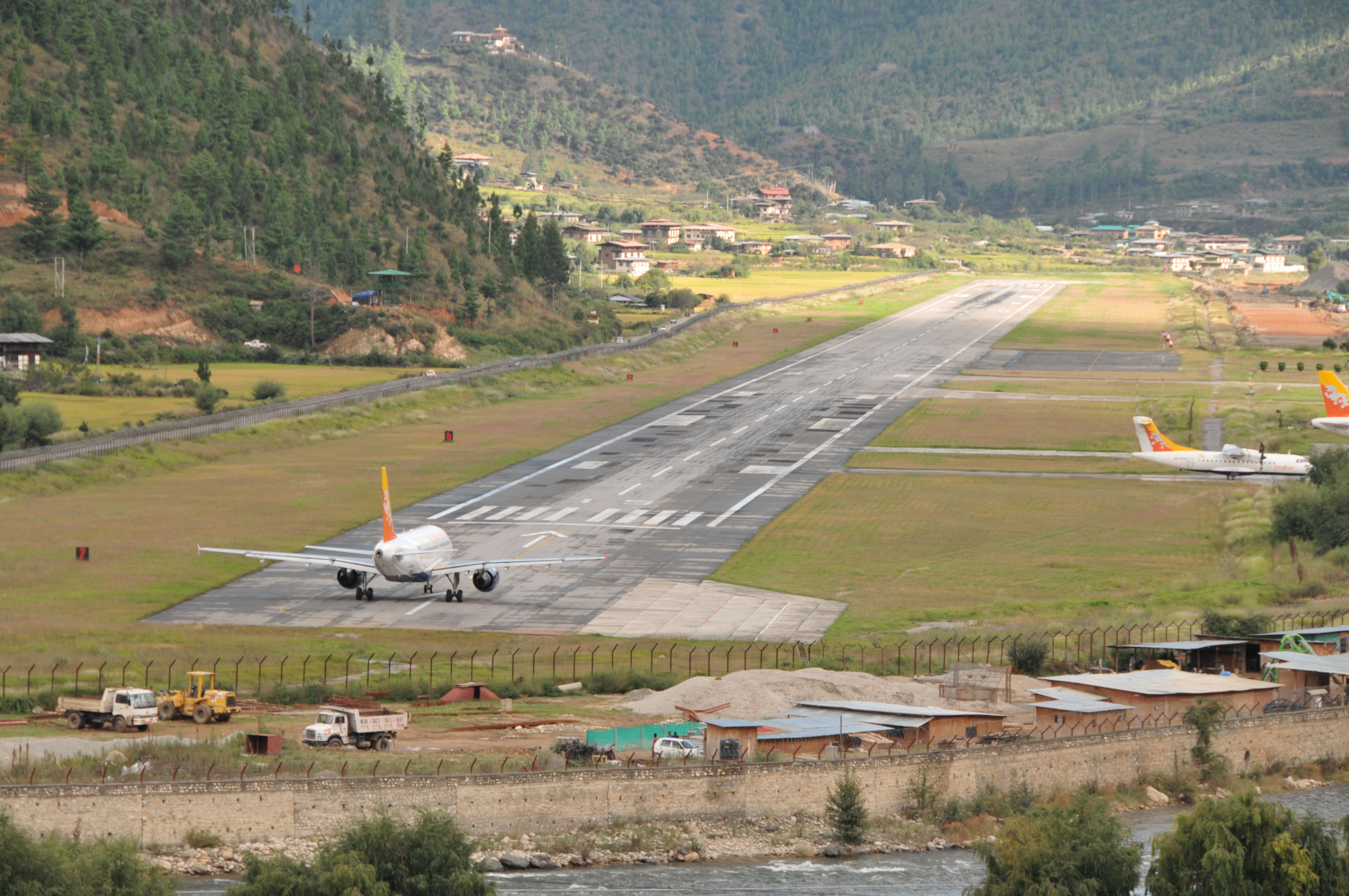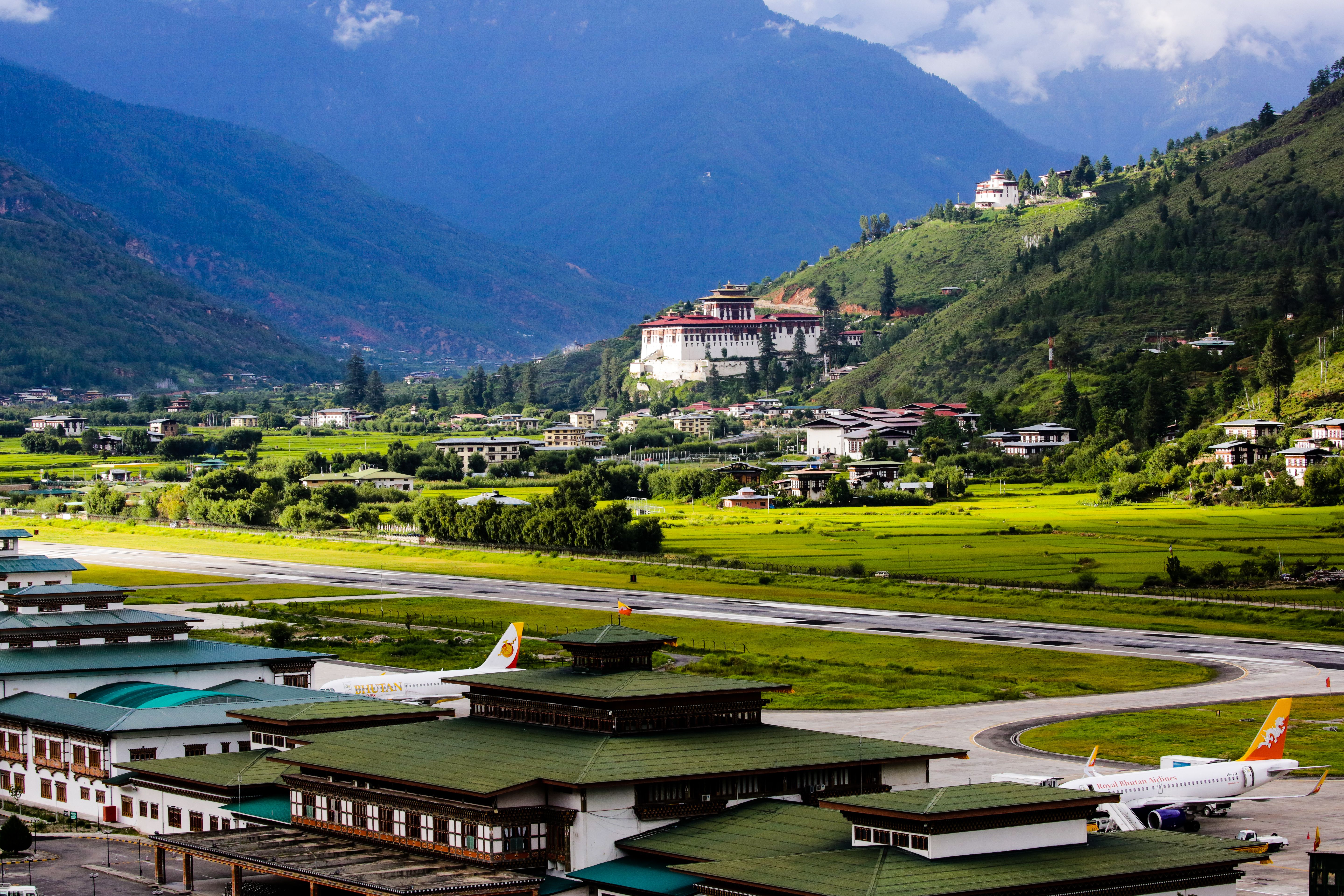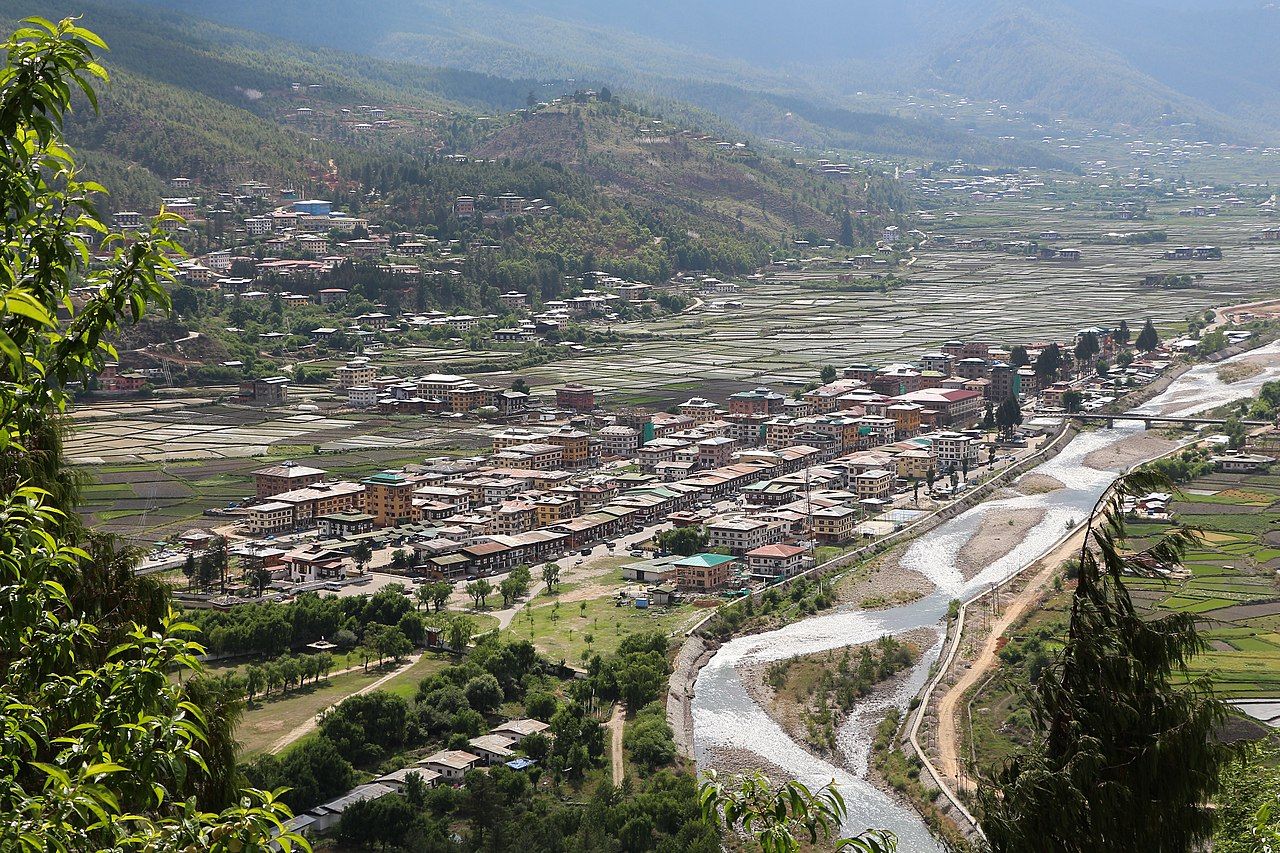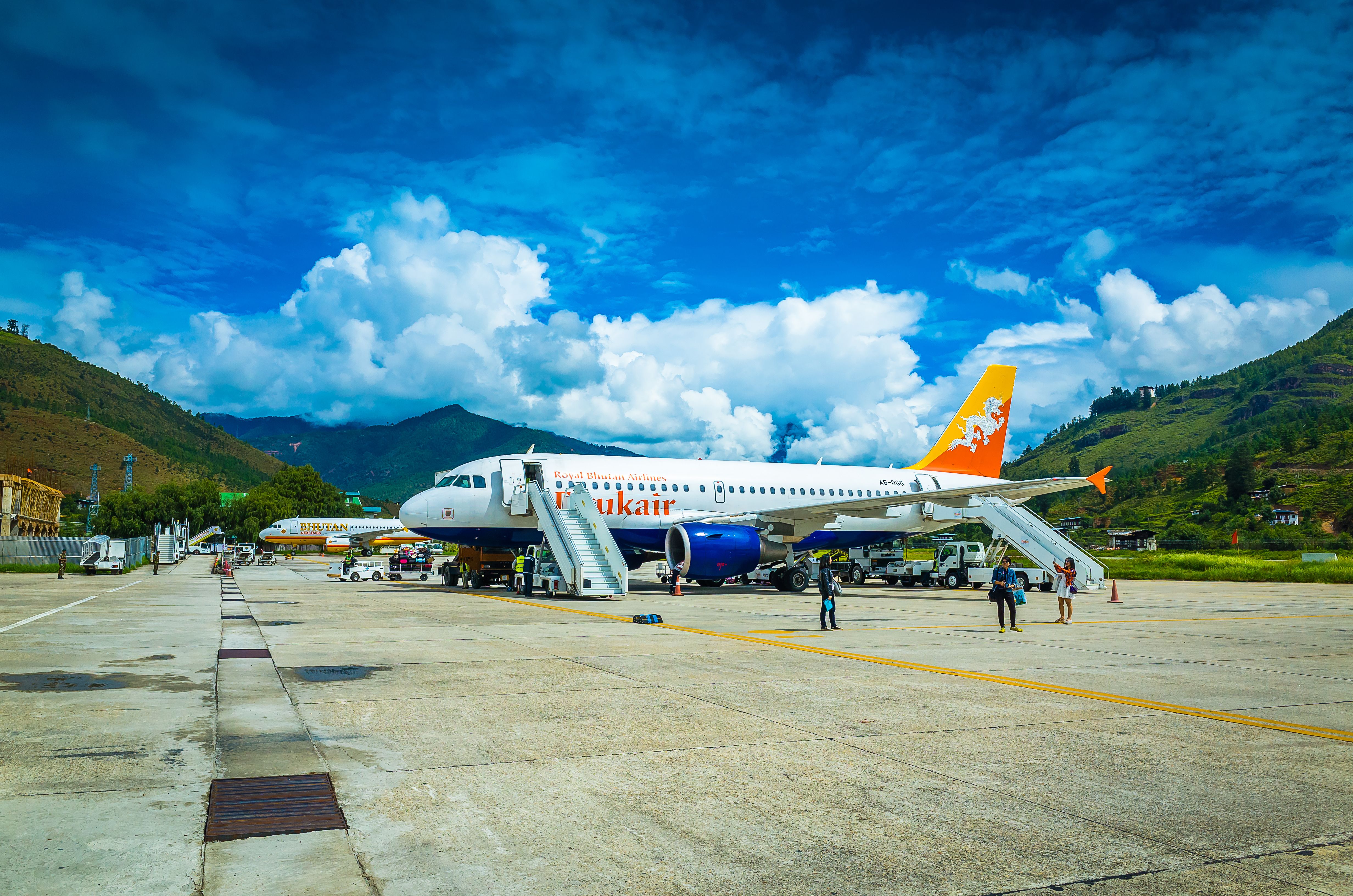Bhutan's Paro International Airport (PBH) is frequently featured on lists of the world's most dangerous airports. Just a small handful of pilots are certified to make the manual by-daylight-only approach between 18,000 feet peaks, through a long, winding valley, and onto a runway that is only 7,431 feet long and visible for only moments before landing. Let's take a closer look at how it all works.
Manual approach by checkpoint landmarks
Very few pilots are certified to land at Bhutan's Paro International Airport, and not without reason. Firstly, there is no radar to guide planes into the airport.
As a result of this, the pilot needs to fly entirely in manual mode, according to procedures for landing that have been designed by experienced pilots and aircraft manufacturers. These specify at which speed and altitude the aircraft needs to be at specific visual landmark checkpoints as the pilots make their approach into Paro.
Want answers to more key questions in aviation? Check out the rest of our guides here!
For these reasons, flights are only allowed during daylight and under good visibility, and they can often be diverted due to clouds. As if being able to check the visual landmarks and the runway wasn't enough, the pilot also needs to watch out for electrical poles and house roofs on the hillside as they maneuver between the mountains at a 45-degree angle before dropping quickly onto the runway.
Other airports rely on ILS (Instrumental Landing Systems) to guide the aircraft laterally and vertically in an approach to landing. At Paro, the pilots only have one VOR (Very high-frequency Omni-directional Range) to guide them.
Get the latest aviation news straight to your inbox: Sign up for our newsletters today!
However, an IFP (Instrument Flight Procedure) called RNP AR Cloud-Break is being developed for Paro by Airbus-owned NAVBLUE:
"As already demonstrated on NAVBLUE projects in Colombia and Vietnam, our knowledge of aircraft performance and the latest procedure design techniques can now be focussed on single airports or even single runway ends. We’ve built on the existing RNP AR APCH criteria to tailor a solution specific to the Paro operational environment working with the regulator to achieve approval – this an example of where NAVBLUE can bring real value to operators and airports alike.” - Thomas Lagaillarde, NAVBLUE VP of Ground Solutions."
Unique and challenging factors
The mountains surrounding the airport can be up to 18,000 feet (5,486 meters) high, while Paro International Airport itself sits at an elevation of 7,364 feet (2,245 meters). This in itself affects and restricts the performance of aircraft, and pilots also say that the runway is only really visible for a few brief moments before landing.
Most airports have at least 10 nautical miles of distance for pilots to gauge an aligned approach onto the landing strip. However, Paro International Airport is especially challenging for pilots in that it offers only one to two. However, it does allow takeoffs and approaches in both directions, unlike another of the world's most dangerous airports in the region, namely Tenzing-Hillary Airport in Lukla, Nepal.
An exclusive club
Only two airlines fly to Paro International Airport. The state-owned flag carrier Drukair, also known as Royal Bhutan Airlines, has five planes in its fleet. Three of them are Airbus A319-100s, and there is a single turboprop ATR 42. The airline took delivery of a brand-new Airbus A320neo in March 2020. The privately-owned Bhutan Airlines is also a fan of the A319, as its two planes are both of this type.
Initially constructed for the Indian military
Paro International Airport was initially built towards the back end of the 1960s as an airstrip for on-call helicopter operations by the Indian Armed Forces on behalf of the Royal Government of Bhutan. The country's first airline, Drukair, was established only in 1981 and inaugurated scheduled revenue flights two years later.
The Bhutanese Department of Civil Aviation was only established in 1986, until which time Drukair was responsible for the operation and maintenance of the airport. The Department of Civil Aviation still operates it today, with the airport serving both domestic destinations and international hubs such as Bangkok.
Drukair has around 25 Bhutanese pilots at its disposal, as well as approximately 10 expatriates on its roster. This represents a relatively small staff, and only a handful of them have been certified to land the planes at Paro International. The carrier's first Bhutanese female Captain was Ugyen Dema, who joined Drukair in 2006.
Have you landed at Paro Airport? If so, how did you experience the approach, or, if not, would you like to fly there? Let us know your thoughts and experiences in the comments!
Source: BBC

